One Great Thing About This Otherwise Crappy Time Of Year Is That You Can Make Maple Syrup...
The first thing you need to make maple syrup is some stuff — buckets, taps, hooks, drill, and hammer. A pickup truck helps, too.

Buckets are actually an old-fashioned and inefficient way to collect sap (you'll see why). These days, serious "sugaring" operations use vacuum tubes that whoosh sap straight from the trees to the sugar house. But you can still get tin buckets secondhand from supply dealers. Ours are from Canada.
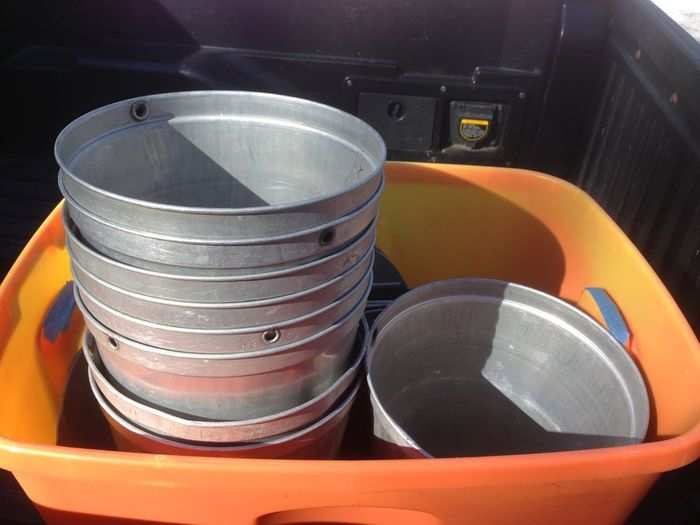
Our taps are the old-fashioned kind, too. The ones you use with vacuum tubes are thinner and made of plastic.
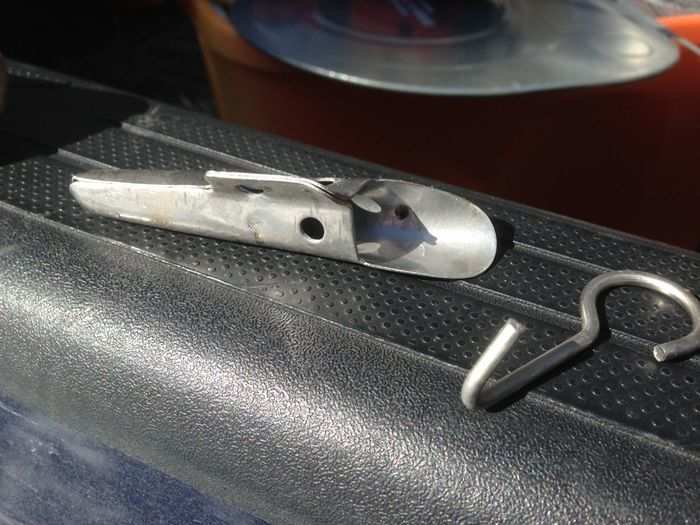
But who wants plastic taps and tubes? Metal for the win!
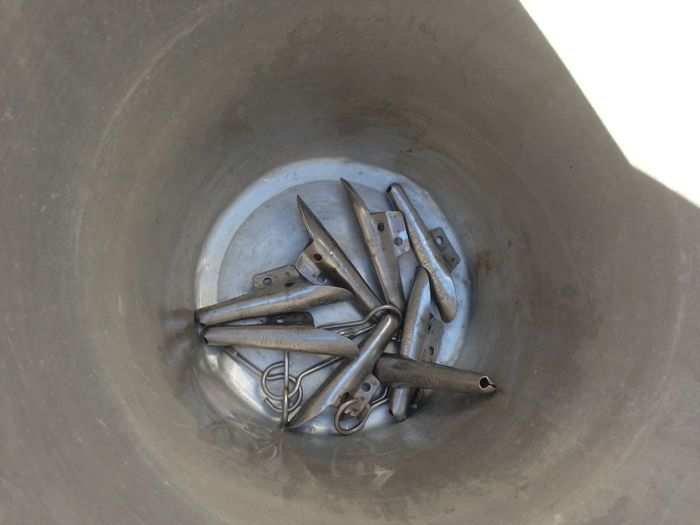
You'll also need a drill. With a 7/16th-inch bit.
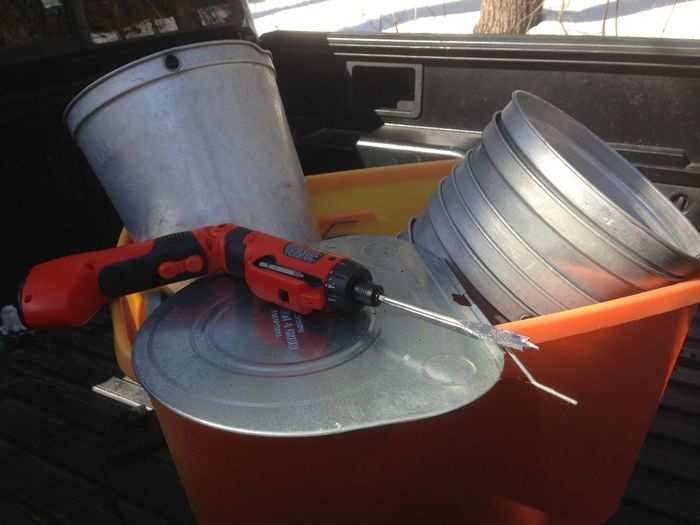
And then, of course, you'll need some maple trees.
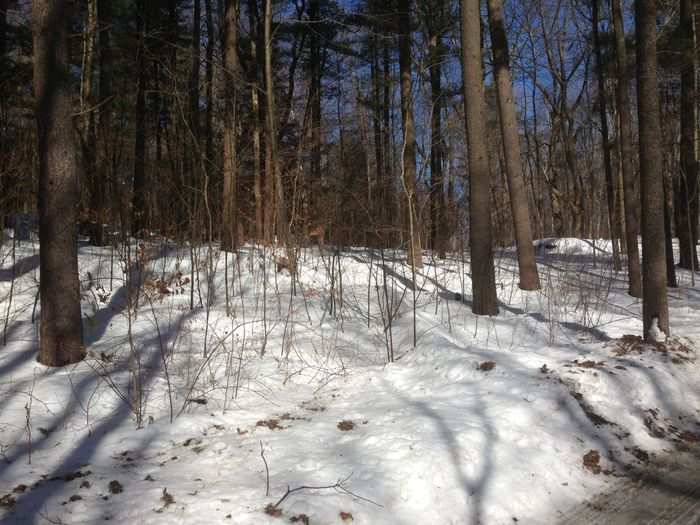
Sugar maples are best, because their sap has the highest sugar-to-water ratio. But you can tap reds, blacks, and other kinds of maples, too. Just don't go drilling any oaks or pines.
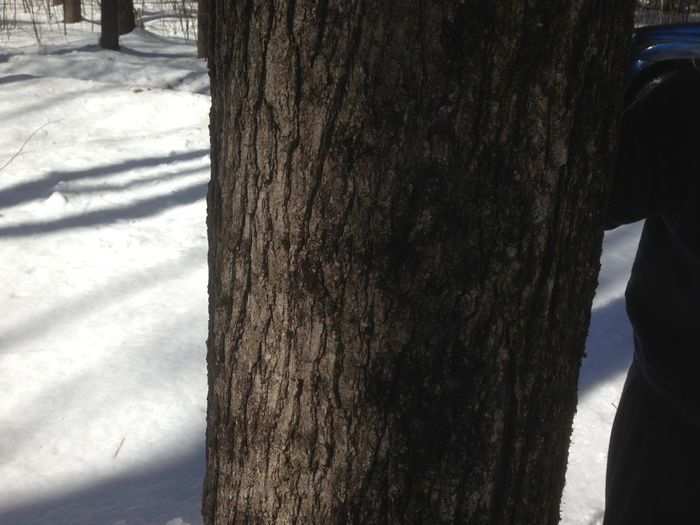
The time of year you tap the trees, by the way, depends on where you are. You need warm days (above freezing) and cold nights. In Connecticut and similar latitudes, sugaring season usually starts in late February. In Vermont, it's March. In Canada, April. Canada is where they make most of the world's syrup, by the way. There's a long season up there, with hot days and frigid nights.
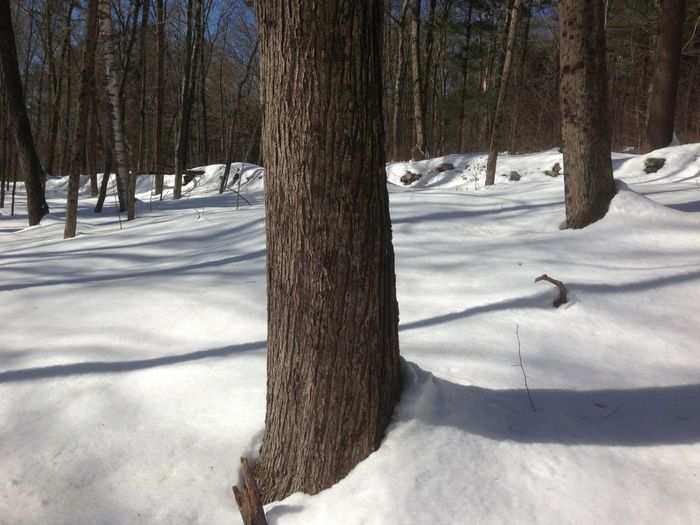
You want big, thick, healthy trees, at least 12-inches in diameter.
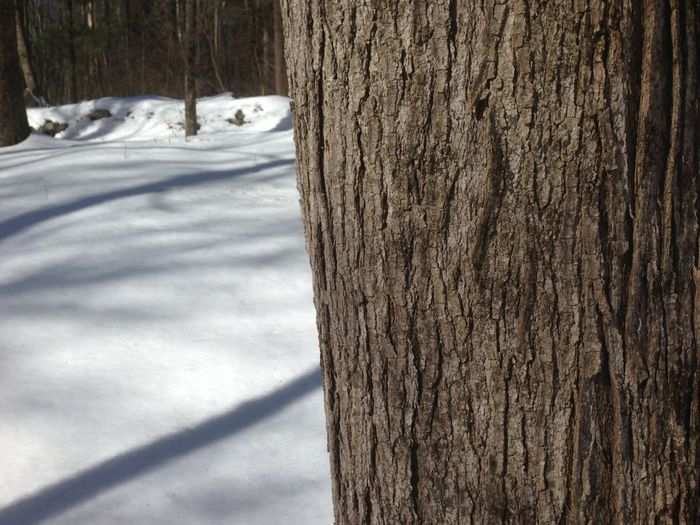
And you want to drill into what looks like healthy core wood.
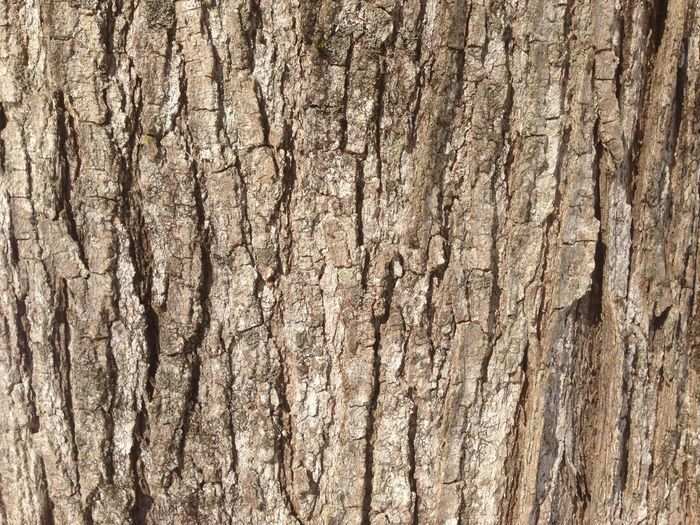
Once you find a good-looking spot on a good-looking tree, start drilling. You want to bore two-and-a-half inches in. The wood's tough. You're going to have to lean into that drill.
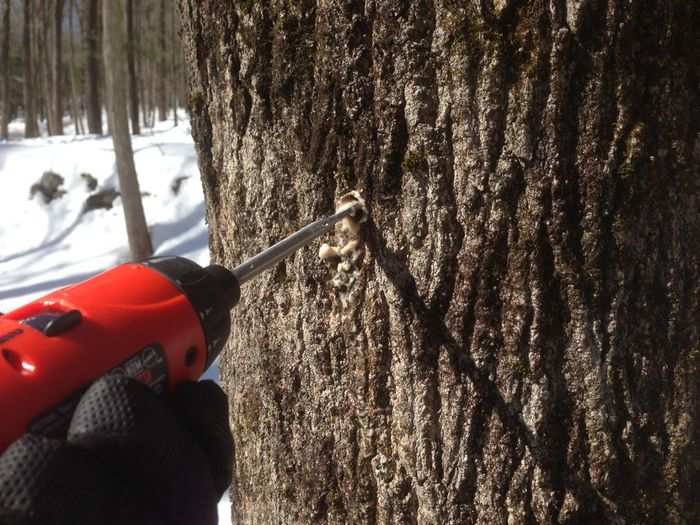
The wood you drill should be yellow and fleshy, not flaky and brown. If it's above freezing, and the sap is running, the wood will be wet, too.
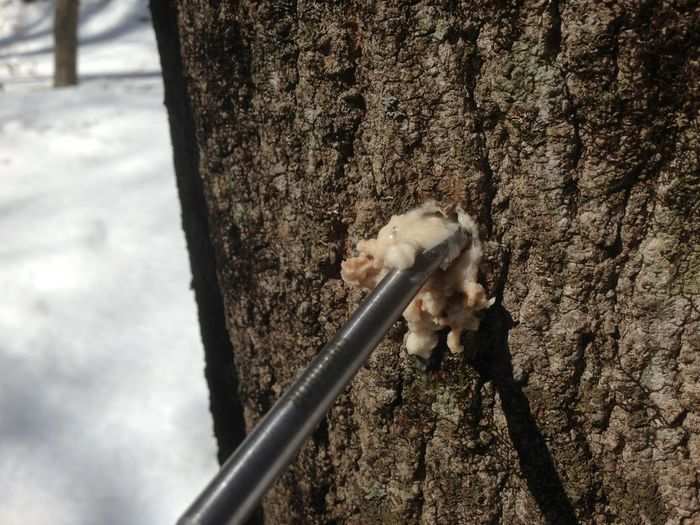
The day we tapped our trees, in late February, the sap had just started running. So once we had our hole, we hurried to slip in the tap.
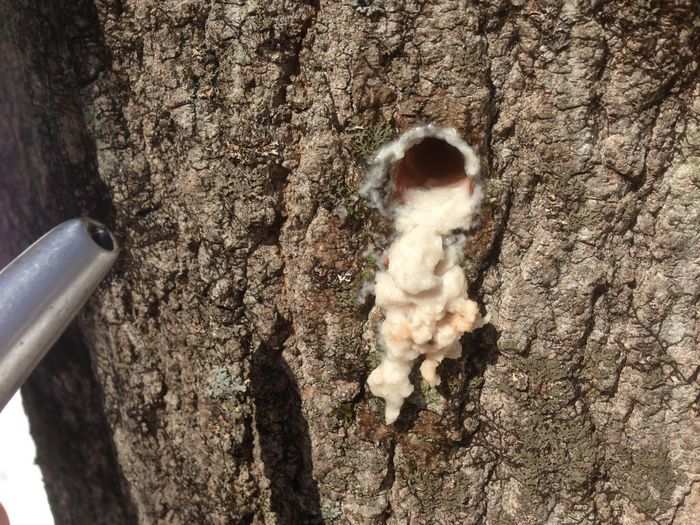
Slip a bucket hook around the tap, slide it into the drill hole, and then tap it in with the hammer (tap--don't smash! You just want to seal the hole, not split the tree.) If the sap's running, you'll see it pool in the mouth of the tap immediately.
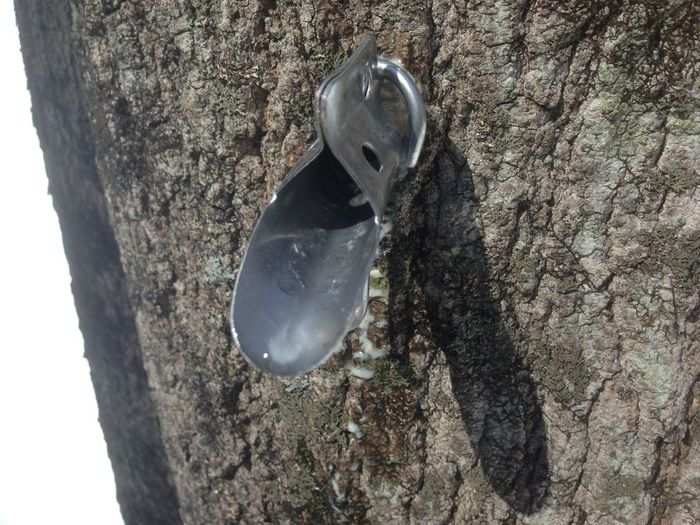
If the sap is running, quick—hang up a bucket!
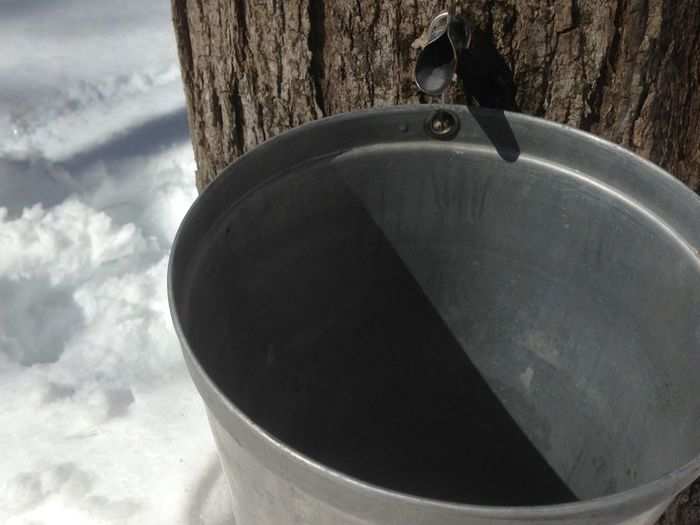
Then put a lid on it, so the sap you collect doesn't get diluted by rain.
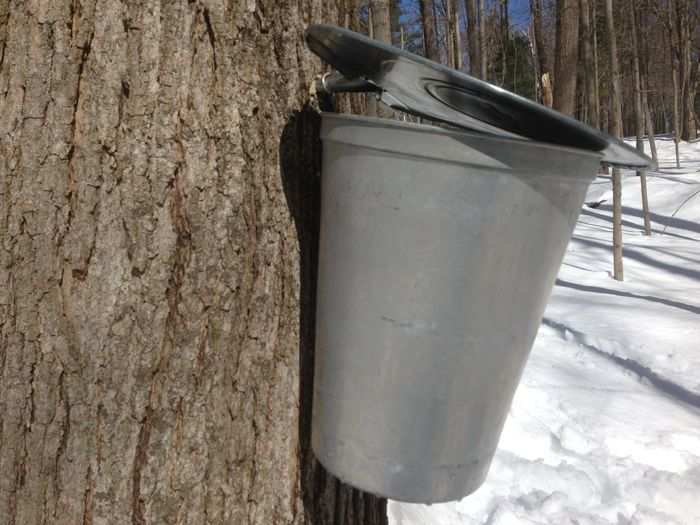
Our lids come from Canada, too: Dominion & Grimm. Nothing but the best! ($1 apiece)
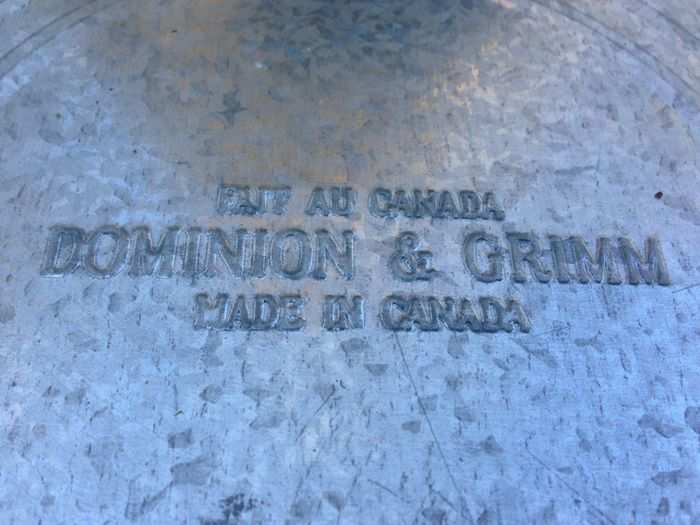
Step back and admire your work. Listen to the plunk, plunk, plunk of the sap hitting the tin.

Then go find some other trees.
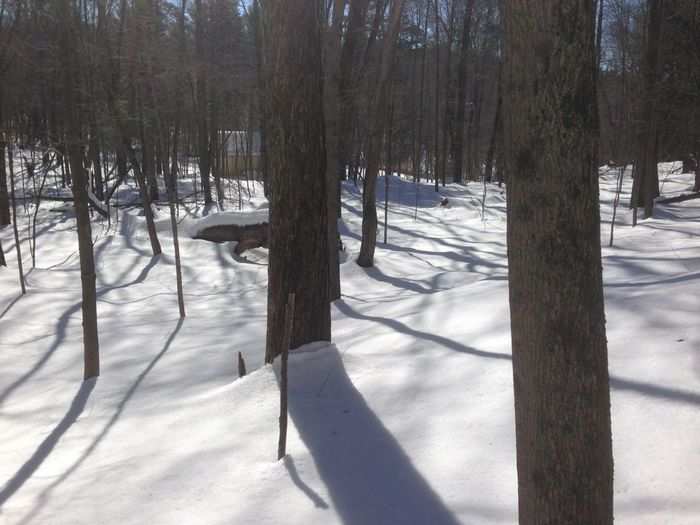
We tap about 8 trees a year.
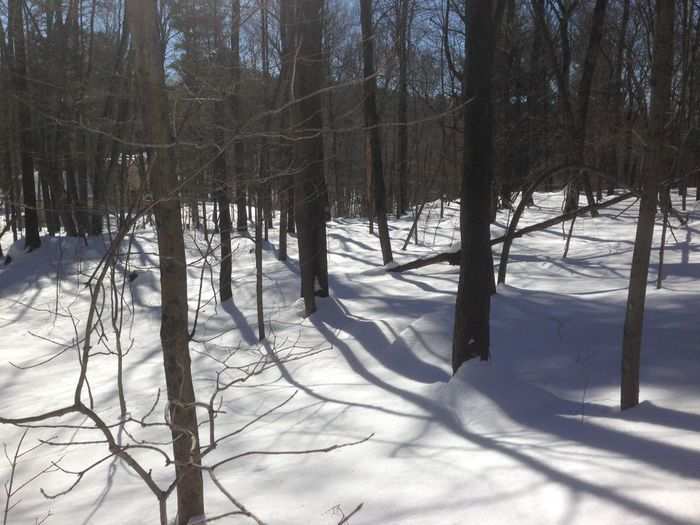
That might sound like a lot, but it's actually bupkis.
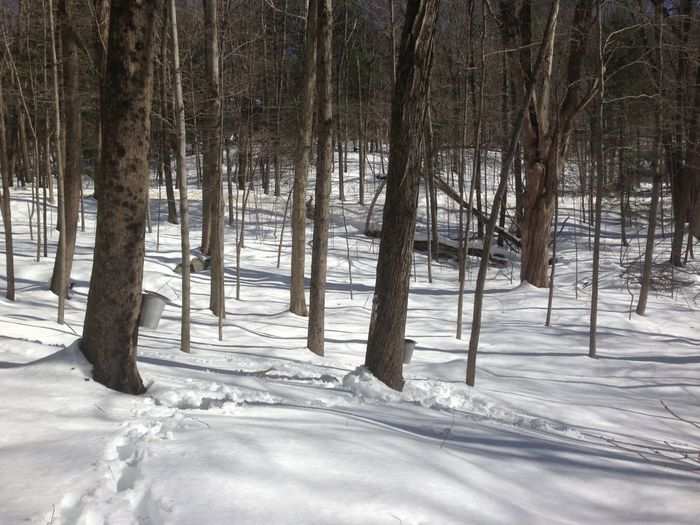
One of our neighbors taps 140. Another neighbor, the town Selectman, who sells syrup, taps 600.
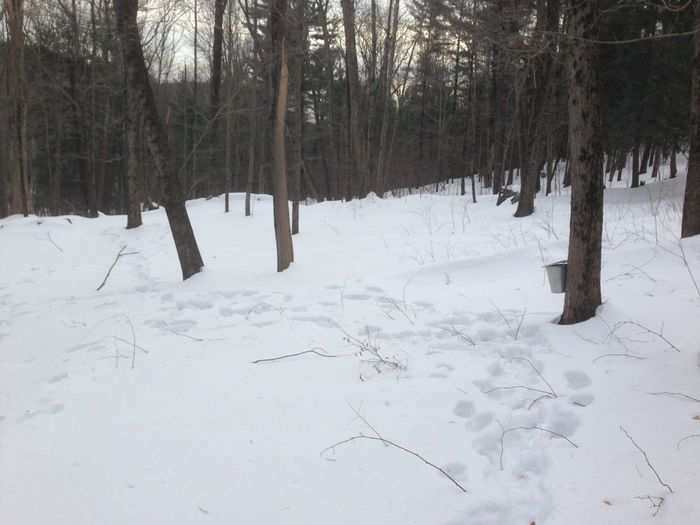
And even that's puny! A few years ago, we visited the third-largest sugaring operation in Vermont. It's run by a family near Putney. They have 400 acres of maple trees, all connected with vacuum hoses running into a central sugar house. On days when the sap is running, it sprays into the sugar house tanks like water from a New York fire hydrant.
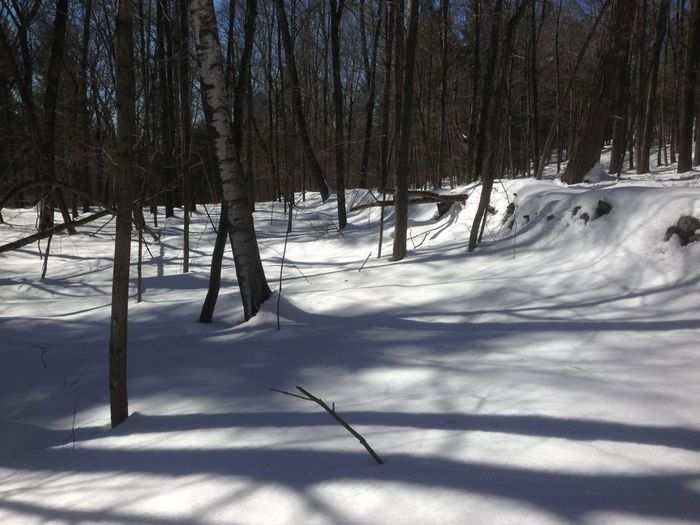
Once you've finished tapping your trees, go find something else to do for a while — preferably overnight. Sap doesn't pour out of trees. It drips. And filling those buckets will take at least a day.
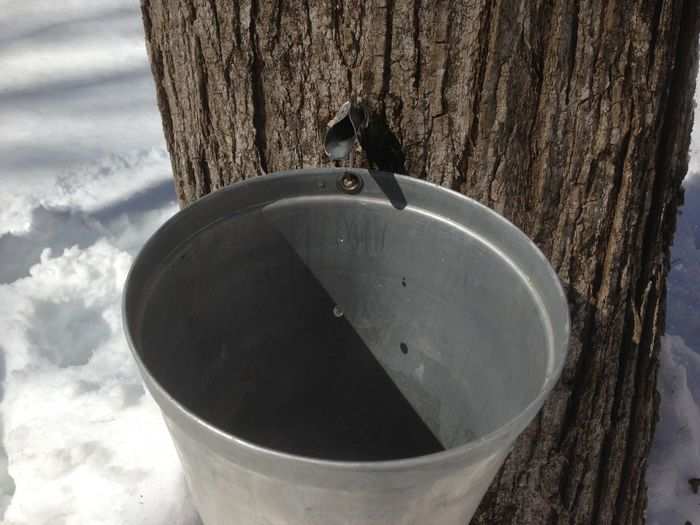
But patience will be rewarded!
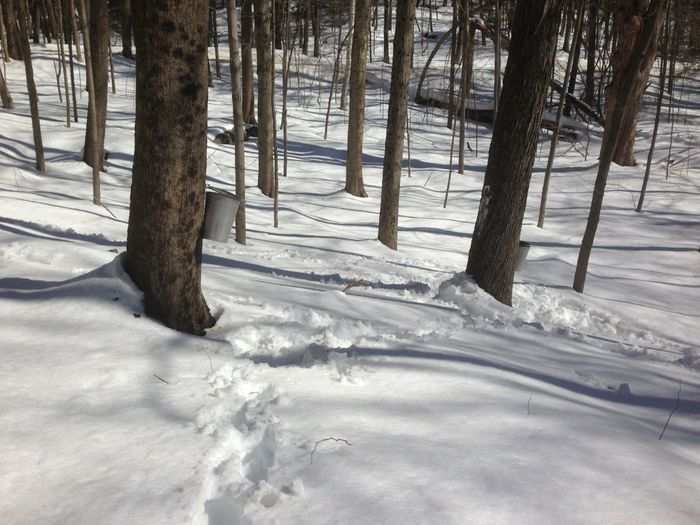
The next morning, this one's almost full!
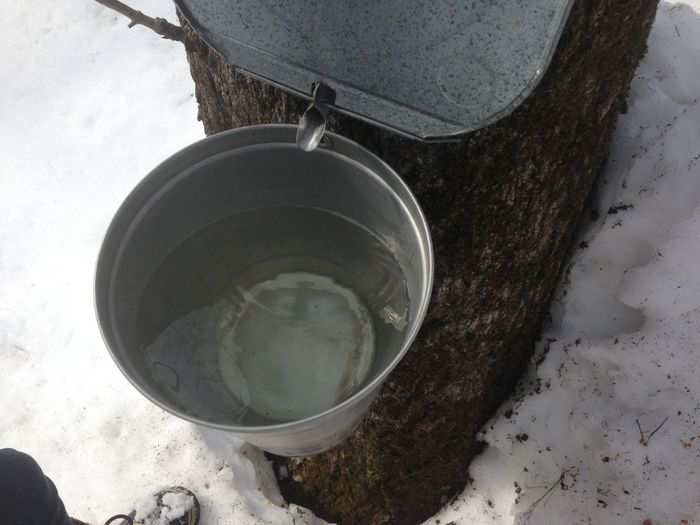
This one's lame, but the sap is pure and clear — exactly as it should be. (If the sap in your buckets is yellow or cloudy, dump it. It has probably spoiled.)
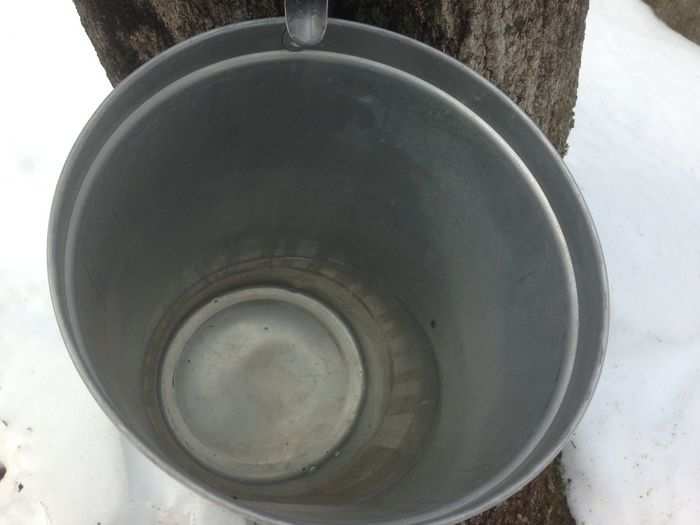
By the way, look closely at this picture. See the tiny black dots? They're bugs. One thing I noticed while tromping from tree to tree a few years ago is that these bugs sometimes gather on the snow. Anyone know what the bugs are? How do they not freeze to death?
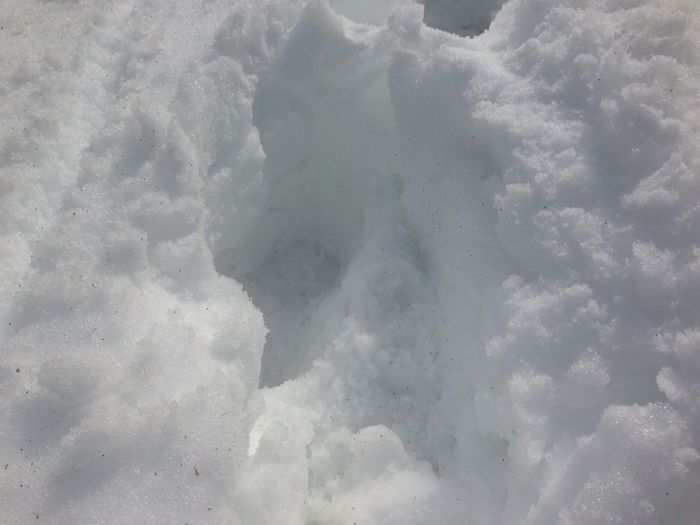
When I was a kid, a neighbor in Vermont used to let me ride around with him on a horse-drawn sleigh while he collected buckets and dumped them into a mobile tank. These days, we do it with feet and a Toyota Tacoma. (The vacuum-tube folks don't have to do it at all.)
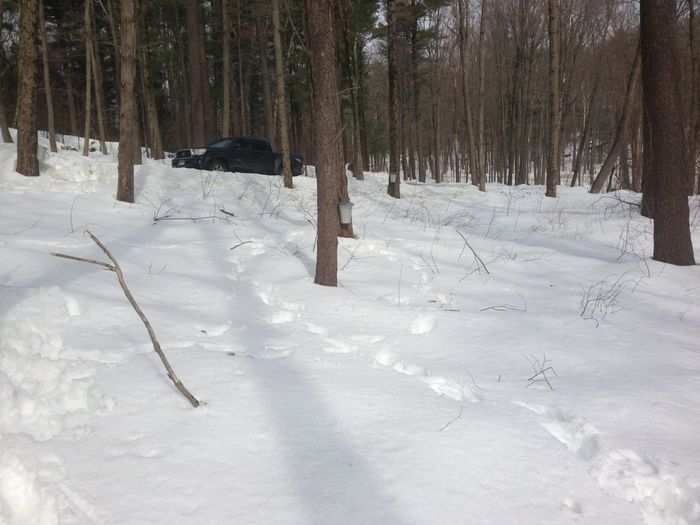
There's a lot of tromping.
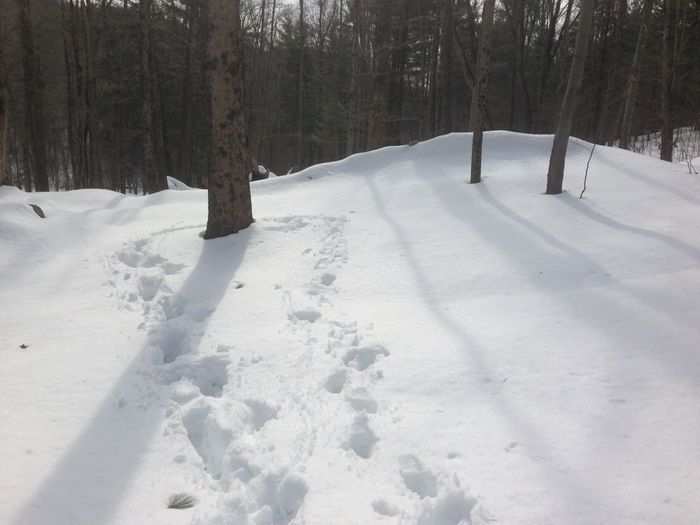
We dump our buckets into a plastic tub in the truck.
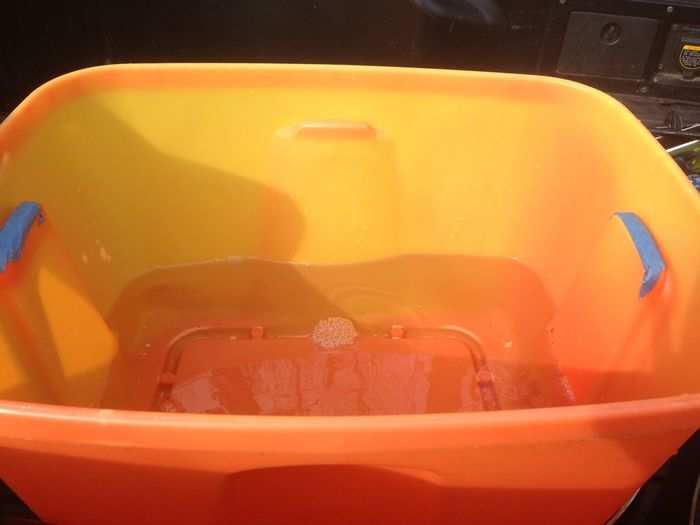
After visiting all the trees, we've got a pretty good haul.
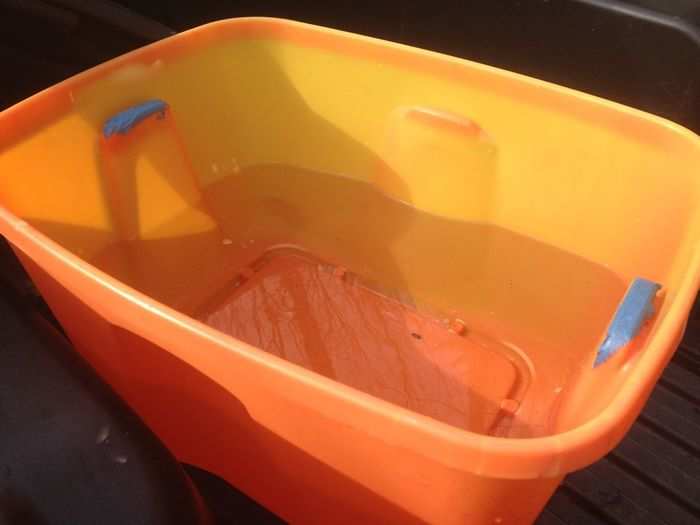
It's super clean and clear, just as it should be.
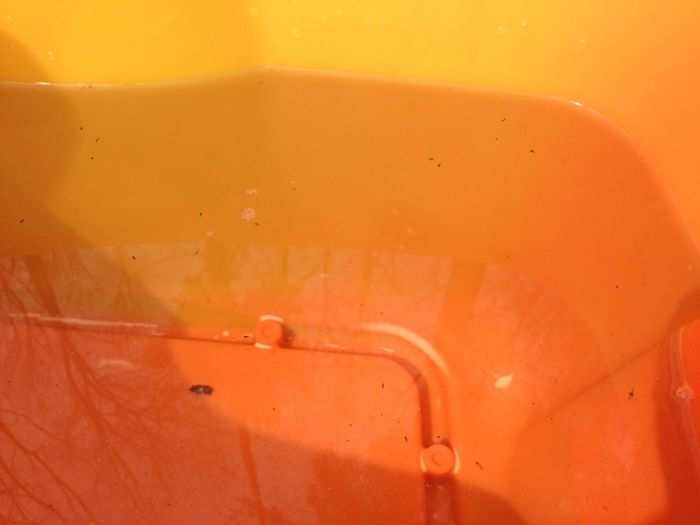
Sometimes, if it gets really cold at night, you'll arrive at your buckets to find this.
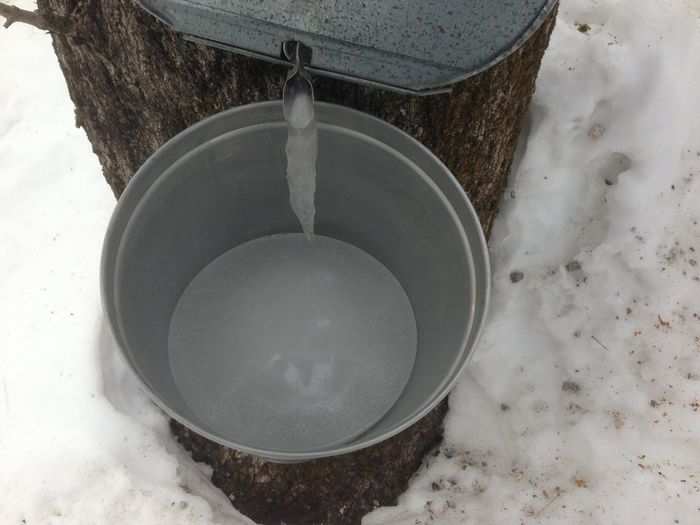
And then your sap-collection tank will look like this.
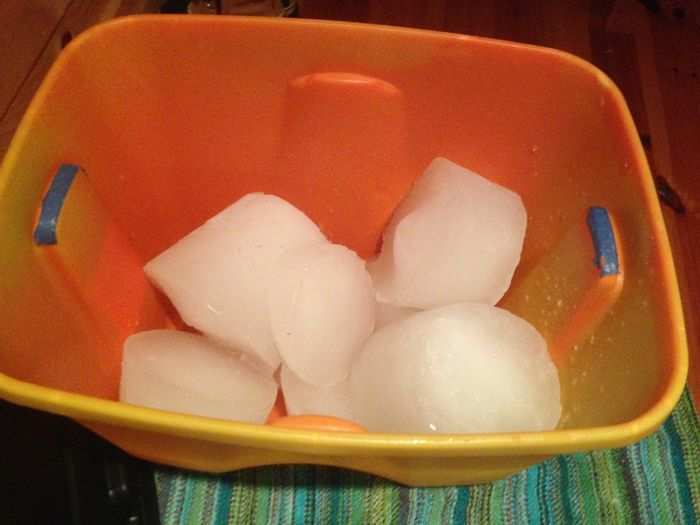
But no worries! Frozen sap makes good syrup, too. At least it does for us.
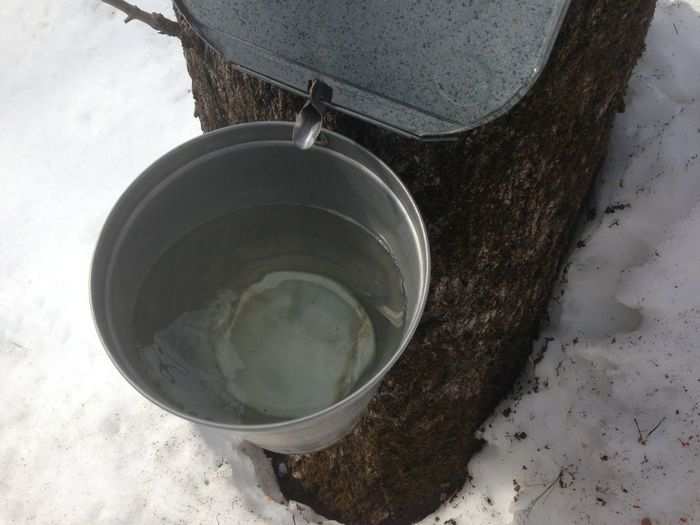
After you visit all your trees, it's off to the sugar house.
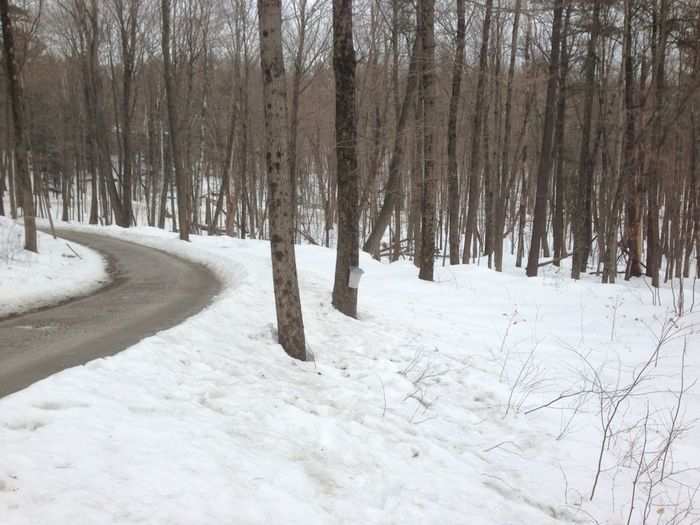
Real sugar houses are special buildings that look something like this.
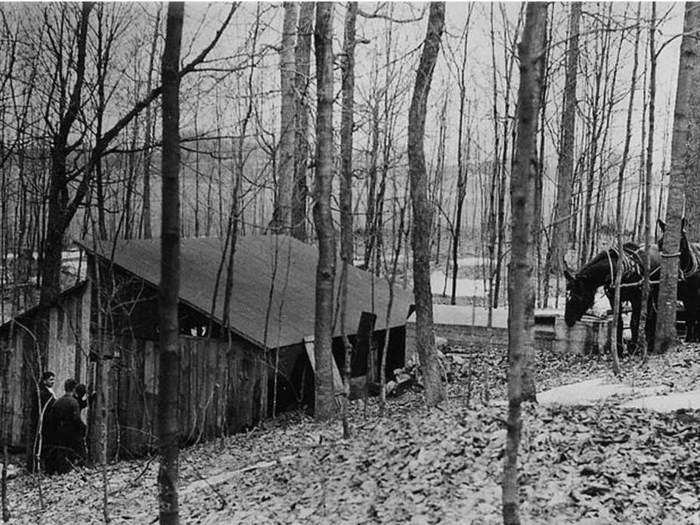
Inside the sugar house is a big contraption like this, which is called an evaporator. Many of them, like this one in Maine, are wood-fired.

Real sugar houses, like this one in Ira, Vermont, are marvelous places. The wood smoke and sap steam combine to create one of the most marvelous smells you can imagine. And thanks to the fire they're toasty warm, even on the coldest nights.
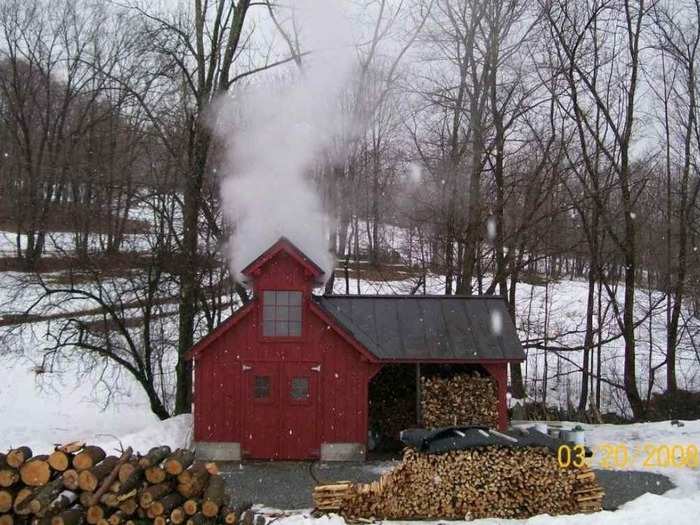
Alas, we don't have a real sugar house. Or evaporator. We just have a kitchen stove. And spaghetti pots!
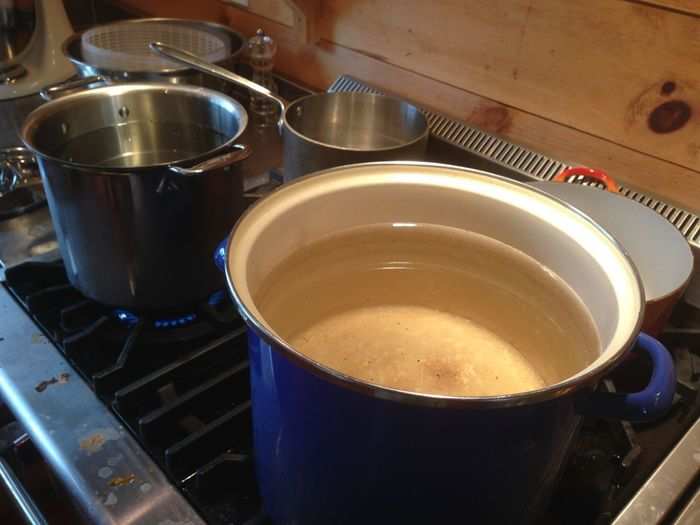
The sap goes in the pots, and the burners go on high.
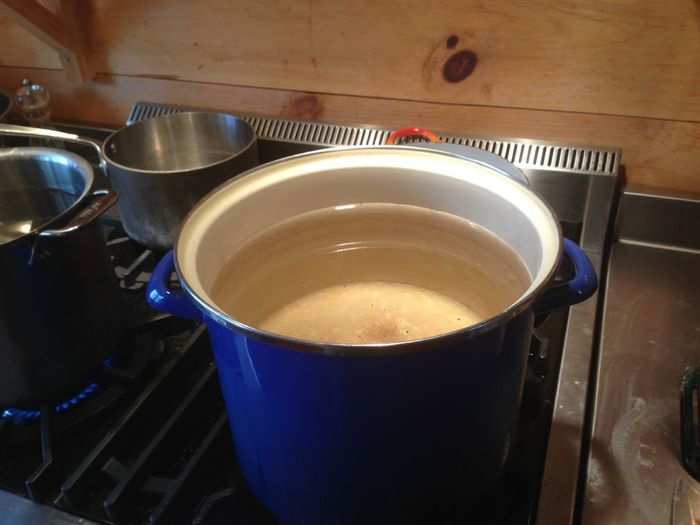
And a half-hour later, the sap is boiling away.
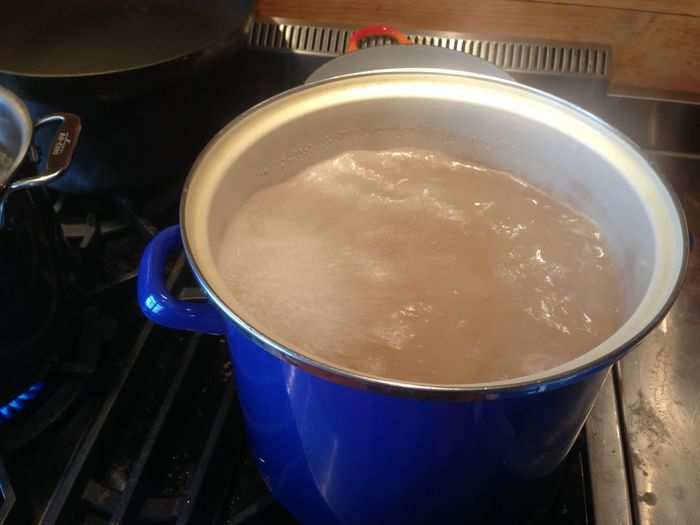
It is going to be boiling for a long, long time.
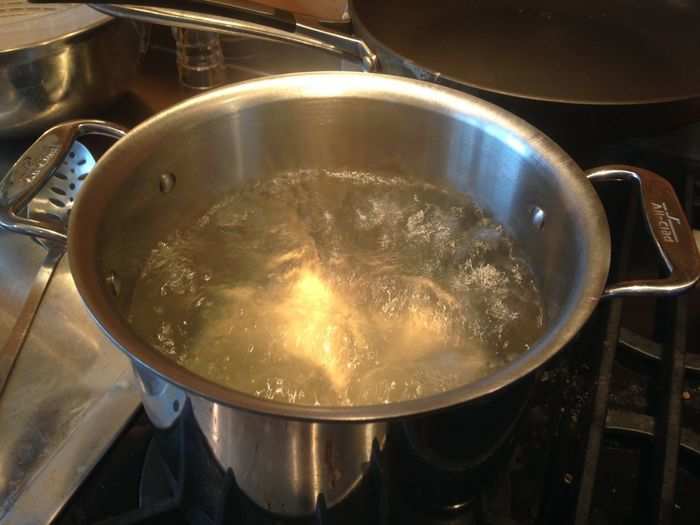
Why? Because guess how many gallons of sap it takes to make a gallon of syrup?
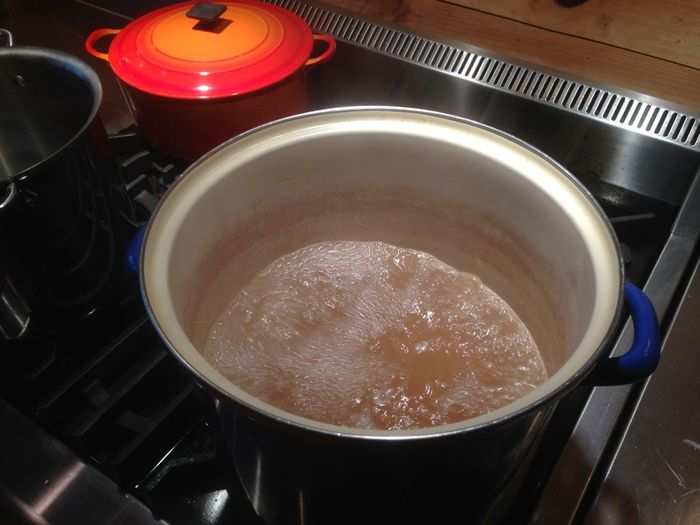
Forty-three!
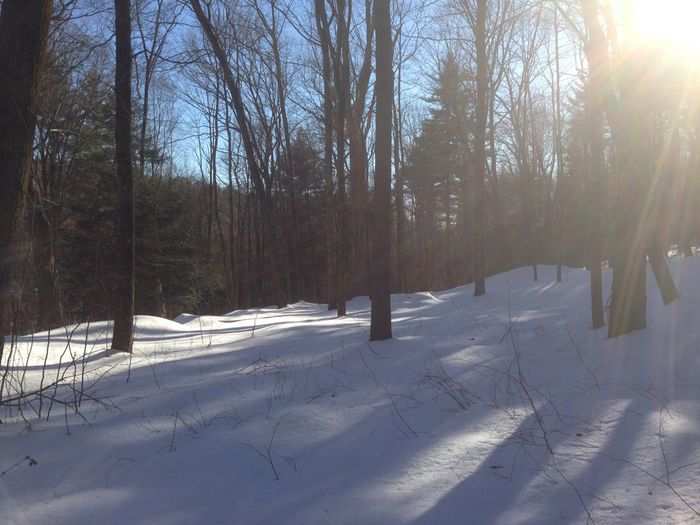
So if you want to make enough syrup to cover a year's worth of family pancakes, that's a lot of tromping and a lot of boiling.
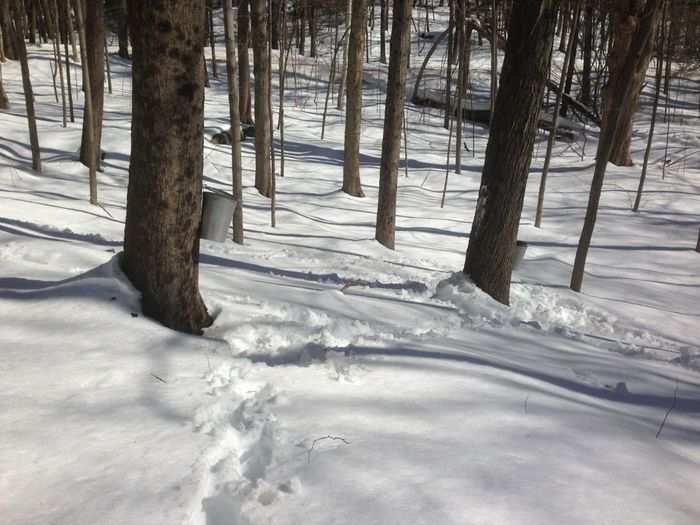
Eventually, though, after hours and hours of boiling (~10, if memory serves), that big orange vat of sap we collected earlier boils down to something like this. It's 1/43rd of the amount of liquid we started with.
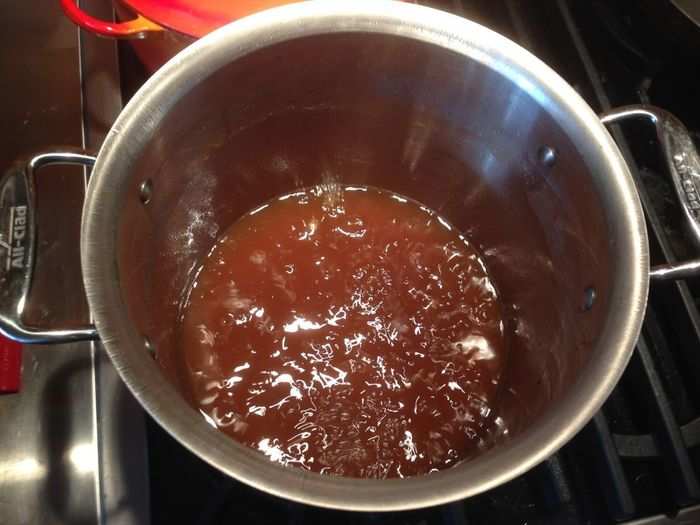
By now, it looks and smells like syrup. And it tastes fantastic. But now comes the tricky part...
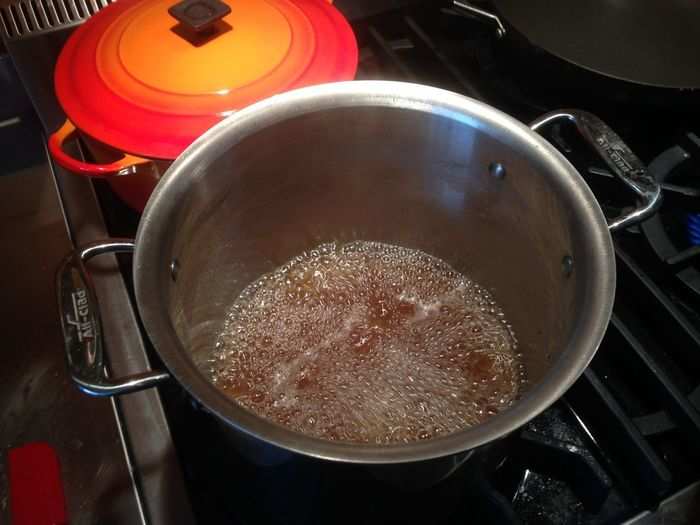
It turns out that "syrup" has to have a very specific sugar content. Too little, and it will spoil and deteriorate. Too much, and it will crystalize. One way of determining whether you've reached the right sugar level is by taking careful temperature readings.
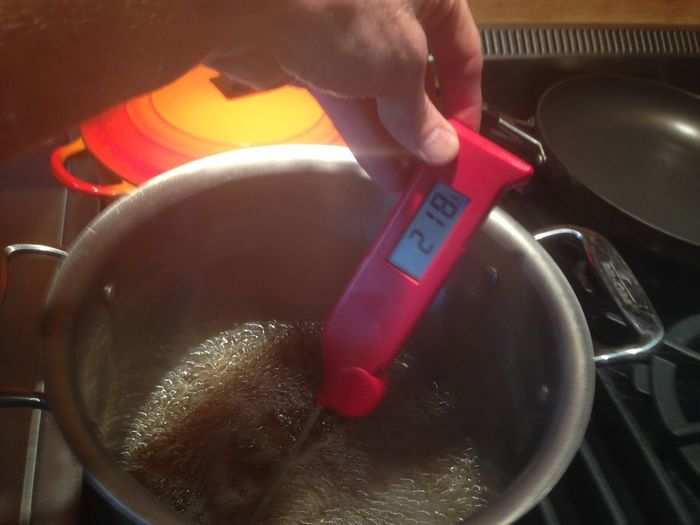
"Syrup" boils at 7.2 degrees above the temperature at which water boils. At sea level, water boils at 212 degrees, so syrup would boil at 219 degrees. We're not at sea level, though. We're at about 1,000 feet. So syrup boils at a higher temperature...
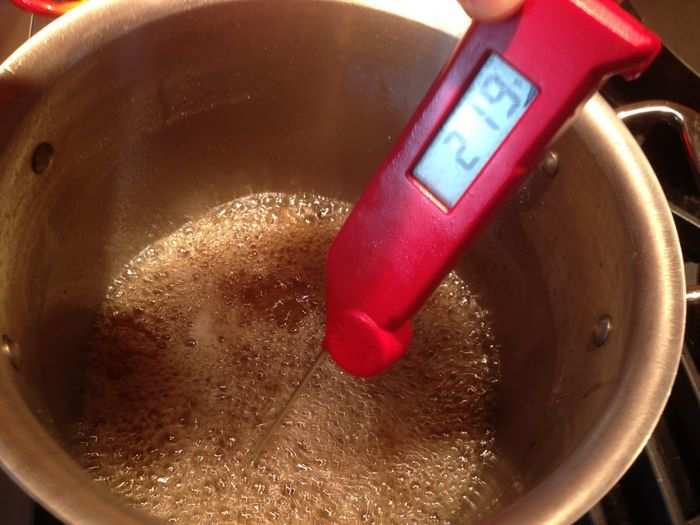
220 degrees!
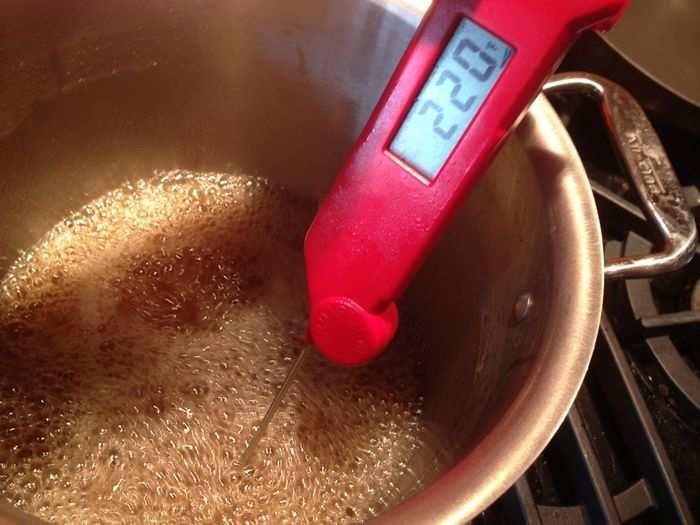
Um, no. Wait. Water boils at LOWER temperatures at higher altitudes, not higher temperatures. And that means we've over-boiled. So it's back to the trees to get more sap...
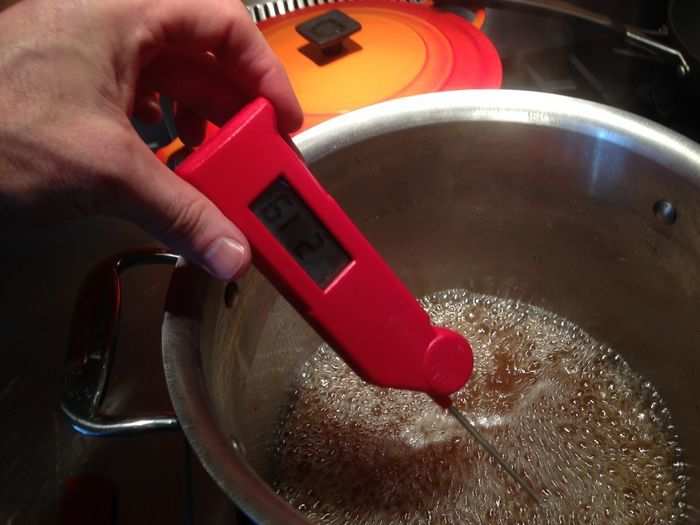
And then reboiling the diluted mixture until we hit precisely 217 degrees.
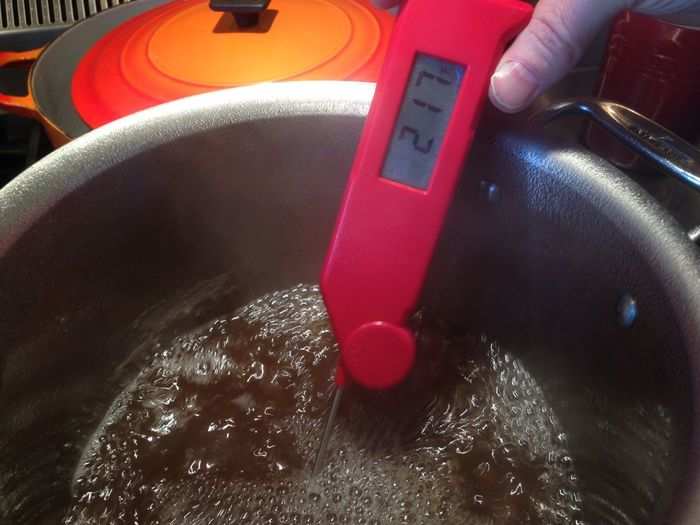
And now we have syrup!
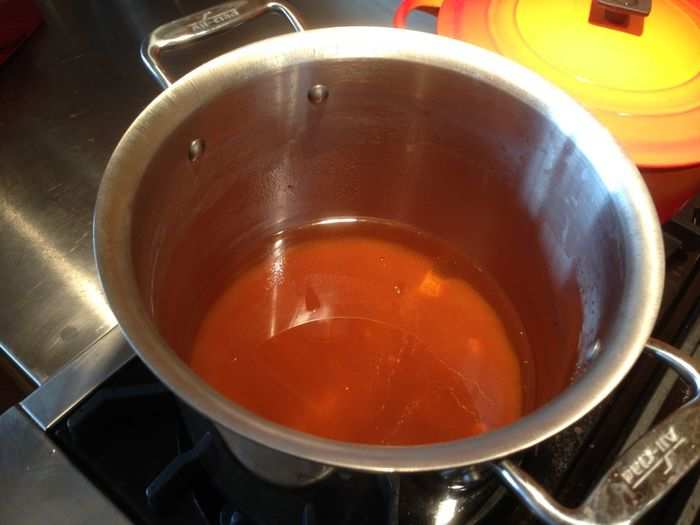
It tastes so sublime at this point that you'll be tempted to bake up some waffles and drown them immediately. But there's one step left. Filtering.
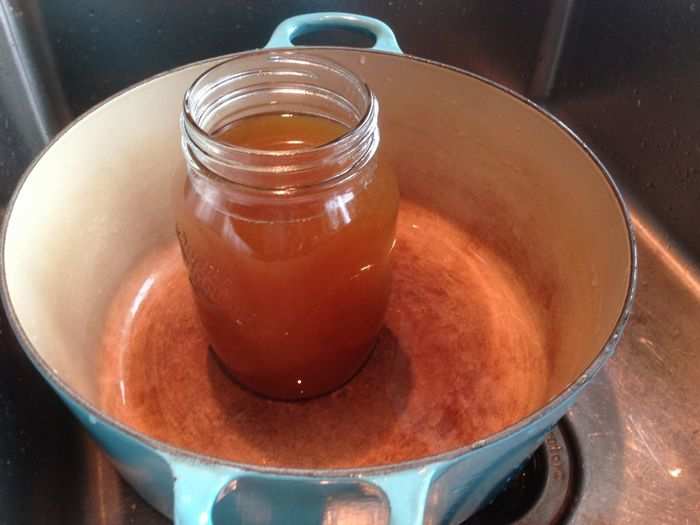
Unfiltered syrup is cloudy with particles. To fix that, you can dump it into the equivalent of a huge coffee filter... or you can just wait a while.

We left our syrup sitting on our porch for a week. And all those particles settled to the bottom. Then we decanted it.
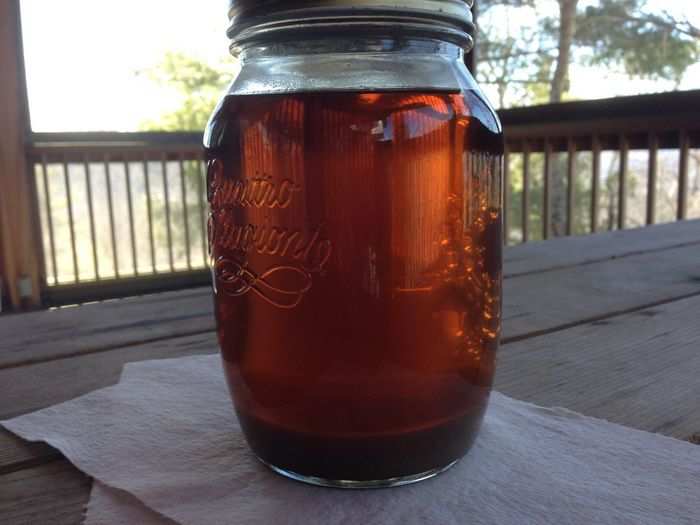
Making syrup isn't exactly the most efficient or "green" process in the world. Between equipment, gas, propane, and time, you'd be vastly better off driving down to the supermarket and grabbing a gallon or two.
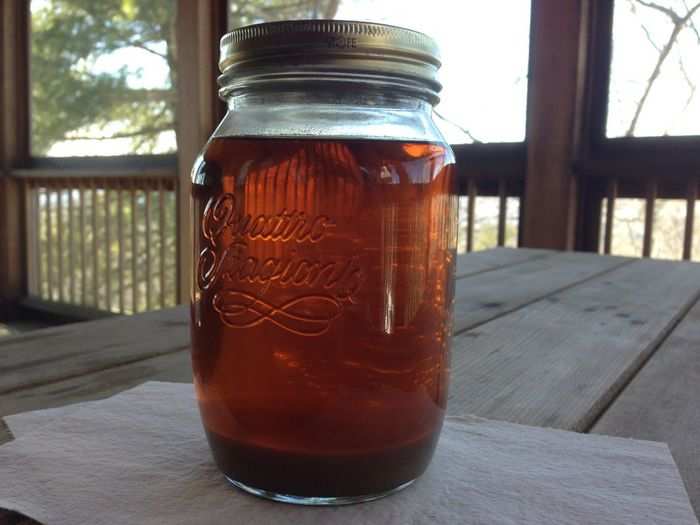
But it's become a sort of family tradition.
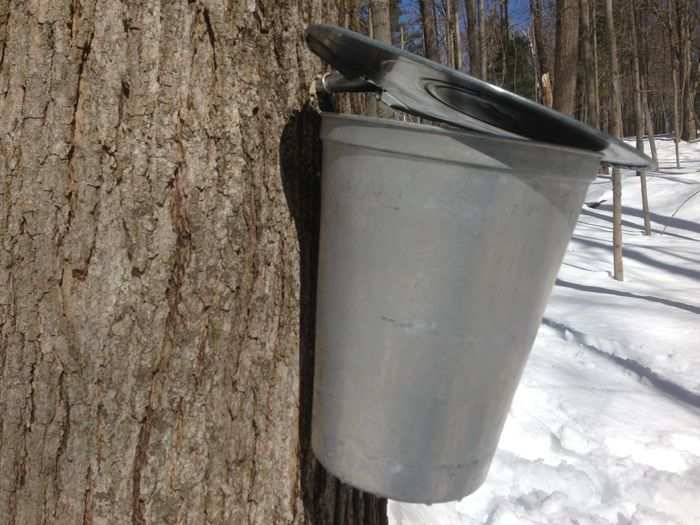
And it's nice to be able to do something productive during that weird season between winter and spring.
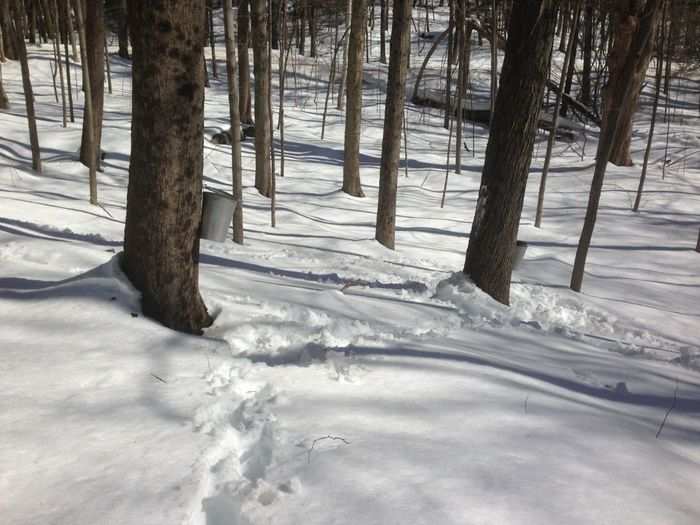
And now I'll tell you about a plane ride I took last year...
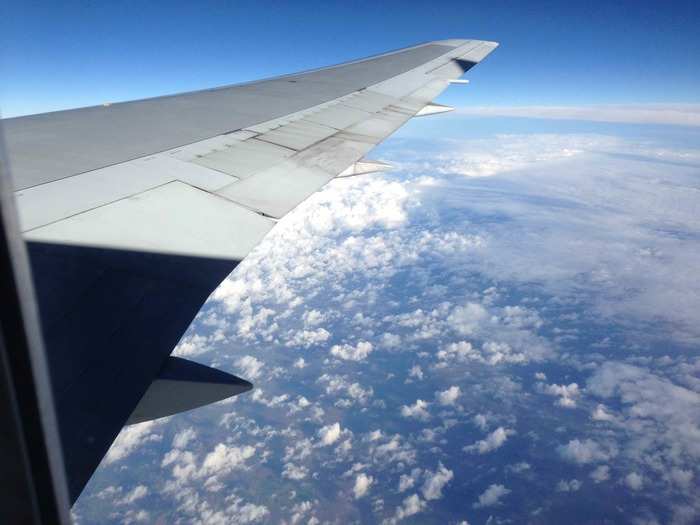
Popular Right Now
Advertisement